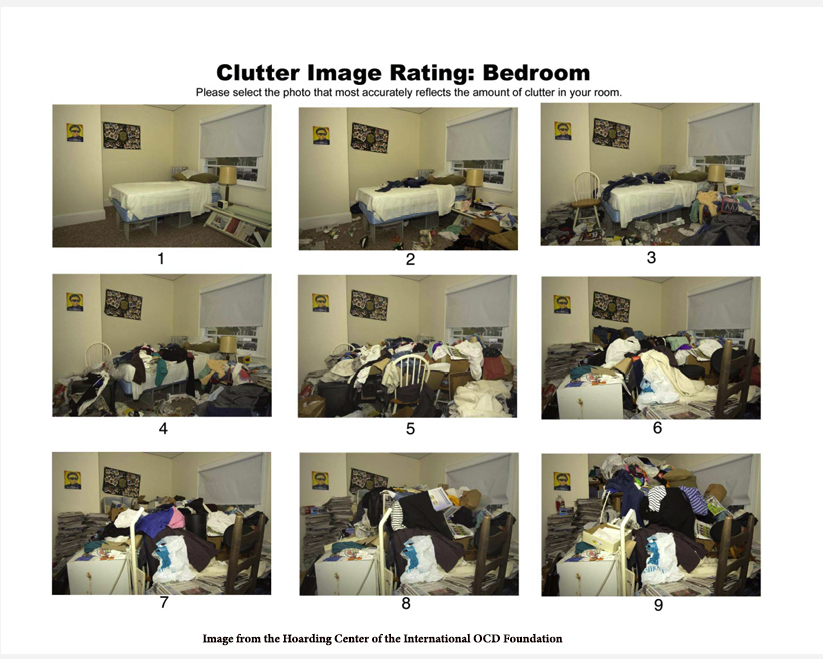Perhaps you’ve seen Hoarders on cable TV and joined in as viewers experienced the trauma of hoarders giving up their possessions. Hoarding disorder is a diagnostic category where individuals have “difficulty discarding or parting with possessions regardless of their actual value as well as, in most cases, persistent acquisition of objects.” For the diagnostic connoisseur, it is not technically an obsessive-compulsive disorder but probably lies within that spectrum of disease. For the sharp-eyed reader, the definition places no specific value on the hoarded possessions, leading to the first insight.
Hoarding as Cultural Artifact
Dante referred to hoarders as “tight-fisted clergy,” assigning them to the 4th circle of Hell – for those committing the sin of greed. Scrooge, either the Dickens character or the friendlier Scrooge McDuck, also may come to mind. Hoarding, in the sense of greed, seemed to peak during our Great Depression when it was far safer to hoard your money at home than take it to any of the failing banks. In a sense, the hoarding of those times represented a means of exerting personal control. President Roosevelt issued Executive Order 6102, "forbidding the hoarding of gold coin, gold bullion, and gold certificates within the continental United States," a law not repealed for another 41 years.
Until the Collyer brothers, who we will return to in a moment, hoarding mostly referred to valuables, like how the “tight-fisted” possessed gold or how we describe those buying up all the toilet paper in the Winter of 2020. Hoarding is partly a social construct.
Homer and Langley
Homer and Langley were smart; both attended Columbia University, Homer studying admiralty law, Langley studying engineering and chemistry. The infamous brownstone was a family inheritance, and until their middle years, they seemed to pursue a relatively normal life. In 1933, Homer suffered from retinal bleeding and lost his eyesight, Langley took over full-time care of his brother, and for unknown reasons, there began a general retreat from sociability. That retreat included not paying bills.
The brothers made the news when workers for Consolidated Edison, NY City’s power supplier, forced their way into the home to remove gas meters shut off after not paying their bills. Somewhere along the way, the Bowery Savings Bank tried to evict them for not paying a mortgage for three years. When asked about bundles of newspapers stacked around their home, Langley said, “I am saving newspapers for Homer, so that when he regains his sight he can catch up on the news." The true nature of their hoarding came to light when the bank began eviction proceedings, and a cleanup crew could not get past the front door because of all the stuff piled about.
They died within a few days of one another, at home, of course, surrounded by 120 tons of stuff. [1]
A bit of hoarding science
- Hoarders are all around us. A study in Germany identified a prevalence of about 5.8%, with hoarders “significantly more likely to buy items, acquire free things, and steal items they did not need, compared to non-hoarders.” For comparison, the World of Data suggests a prevalence of anxiety or depression at around 3.5%.
- Hoarding disorder is felt to result from personal vulnerability experienced early in life, a maladaptation to the meaning and emotional attachment to possessions, which enforces the behavior, and difficulties in attention, memory, categorization, and decision-making.
- The legal standing of hoarders is unclear. While hoarding may seem a private concern, it can result in concerns over public and personal safety. The fact that hoarding is a recognized disease may allow “entitlement claims under the Fair Housing Act …and the Americans with Disabilities Act (ADA), creating a basis for being a “legally protected class.” This has an impact on landlord-tenant disputes.
- Several stages of hoarding have been developed, along with images expressing the degree of clutter and disorganization.

The image of stage 4 is felt by the International OCD Foundation as a “call for help.”
“Too much stuff, too much stuff.
You never get enough 'cause there's just too much stuff.
You know you can hurt yourself, fooling with too much stuff.
Yeah, it'll tear you down, fooling with all that stuff.”
- Too Much Stuff by Delbert McClinton
[1] Among the items “… rusted bicycles, old food, potato peelers, a collection of guns, glass chandeliers, bowling balls, …more than 25,000 books, human organs pickled in jars, eight live cats, … thousands of bottles and tin cans and a great deal of garbage.”
Sources: ‘You reach a point where you can’t live your life’: what is behind extreme hoarding? The Guardian
[Hoarding Disorder in DSM-5: Clinical description and cognitive approach] Psychiatriki DOI: 10.22365/jpsych.2017.282.131




